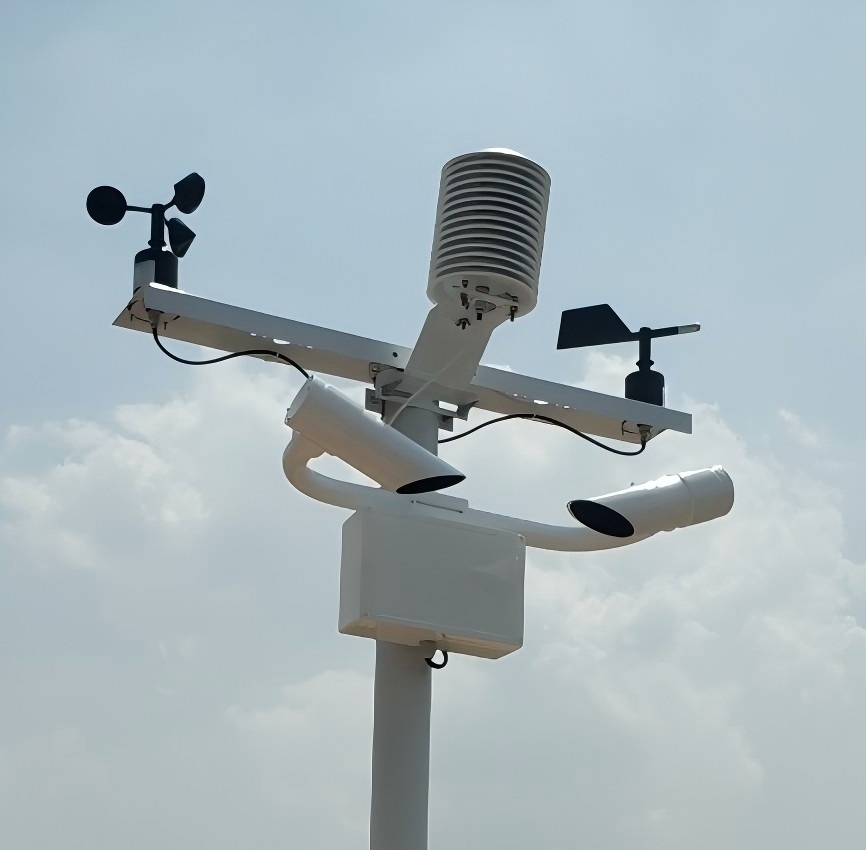Introduction
Wind speed measurement is crucial in various industries, including meteorology, marine navigation, agriculture, renewable energy, and industrial automation. The CDF-10A Plastic Wind Speed Sensor (Anemometer) is a modern device. It is made to give accurate and stable wind speed readings. This sensor works well in many different environments.
The CDF-10A is different from traditional metal anemometers. It has a strong plastic housing.
This makes it resistant to corrosion, lightweight, and affordable. It still performs well. This article explores its key features, technical specifications, applications, advantages over competitors, and installation guidelines.

Corrosion and UV Resistant – The CDF-10A is made from strong plastic, not metal. This ensures it lasts a long time in coastal, marine, and tough chemical environments.
Lightweight & Compact – Weighing significantly less than aluminum or stainless steel sensors, it reduces structural load on mounting systems.
Weatherproof Design – Sealed against rain, dust, and moisture (IP65+ rating), making it suitable for outdoor use.
Precision Wind Speed Detection – Utilizes a low-inertia 3-cup design for rapid response to wind changes.
Wide Measuring Range (0-60 m/s) – Capable of detecting gentle breezes (0.5 m/s) to storm-level winds (60 m/s) with minimal error.
Low Starting Threshold (0.2 m/s) – Ensures accurate readings even in very low wind conditions.
Energy-Efficient (DC 5-24V operation) – Ideal for solar-powered or battery-operated weather stations.
Analog/Pulse Signal Output – Compatible with most data loggers, PLCs, and IoT systems.
Minimal Drift Over Time – Advanced sensor calibration ensures long-term stability without frequent recalibration.
Simple Mounting Options – Can be installed on poles, rooftops, or marine vessels using standard brackets.
No Lubrication Needed – Unlike mechanical anemometers, it has no moving parts requiring maintenance.
| Parameter | Specification |
|---|---|
| Model | CDF-10A |
| Material | Reinforced plastic (fiberglass composite) |
| Measuring Range | 0.2 - 60 m/s |
| Accuracy | ±(0.2 m/s + 1% of reading) |
| Output Signal | Pulse (frequency), Analog (0-5V/4-20mA) |
| Power Supply | DC 5-24V |
| Operating Temp. | -30°C to +70°C |
| Protection Class | IP65 (Dustproof & Water-resistant) |
| Weight | ~200g (Lightweight) |
| Shaft Length | Customizable (Standard: 150mm) |

Used in automatic weather stations (AWS) for real-time wind data collection.
Helps in storm prediction, aviation weather reports, and climate research.
Resistant to saltwater corrosion, making it ideal for ships, buoys, and offshore wind farms.
Monitors wind conditions for navigation safety and port operations.
Assists in wind erosion studies, crop spraying optimization, and greenhouse ventilation control.
Used in factory ventilation systems, cooling towers, and wind turbine performance monitoring.
Ensures safe working conditions in high-wind industrial zones.
Helps in site assessment for wind turbines and performance monitoring.
| Feature | CDF-10A (Plastic) | Traditional Metal Anemometers |
|---|---|---|
| Corrosion Resistance | ✅ Excellent (Plastic) | ❌ Prone to rust (Stainless Steel/Aluminum) |
| Weight | ✅ Light (200g) | ❌ Heavy (500g+) |
| Cost | ✅ Affordable | ❌ Expensive |
| Maintenance | ✅ None | ❌ Lubrication needed |
| Wind Range | ✅ 0.2-60 m/s | ✅ Similar |
| Installation | ✅ Easy | ❌ Complex mounting |
Install on an unobstructed pole or mast (minimum 2m above ground).
Ensure no nearby obstacles (trees, buildings) that could disrupt airflow.
Connect to a data logger/PLC using pulse or analog output.
For IoT integration, use a RS485/Modbus converter (optional).
No lubrication required (maintenance-free).
Occasional cleaning (wipe with a damp cloth to remove dust).
The CDF-10A Plastic Wind Speed Sensor is a highly reliable, cost-effective, and durable anemometer suitable for diverse industries. Its plastic construction, precision measurement, and low power consumption make it a superior alternative to traditional metal sensors.
The CDF-10A provides accurate wind speed data. It works well in weather stations, marine use<strong style="border: 0px; font-style: inherit; font-variant: inherit; font-weight: bold; font-stretch: inherit; font-size: inherit; line-height: inherit; font-family: inherit; font-optical-sizing: inherit; font-size-adjust: inherit; font-kerning: inherit;
Learn how CODA Sensor solar radiation and PAR se
Discover how real-time weather station data impr
Discover how Automatic Weather Stations (AWS) ar
Contact: Molly
Phone: +86-17775769236
Tel: 86-0731-85117089
Email: molly@codasensor.com
Add: Building S5, Aux Square, Yuelu District, Changsha City, Hunan Province, China
We chat